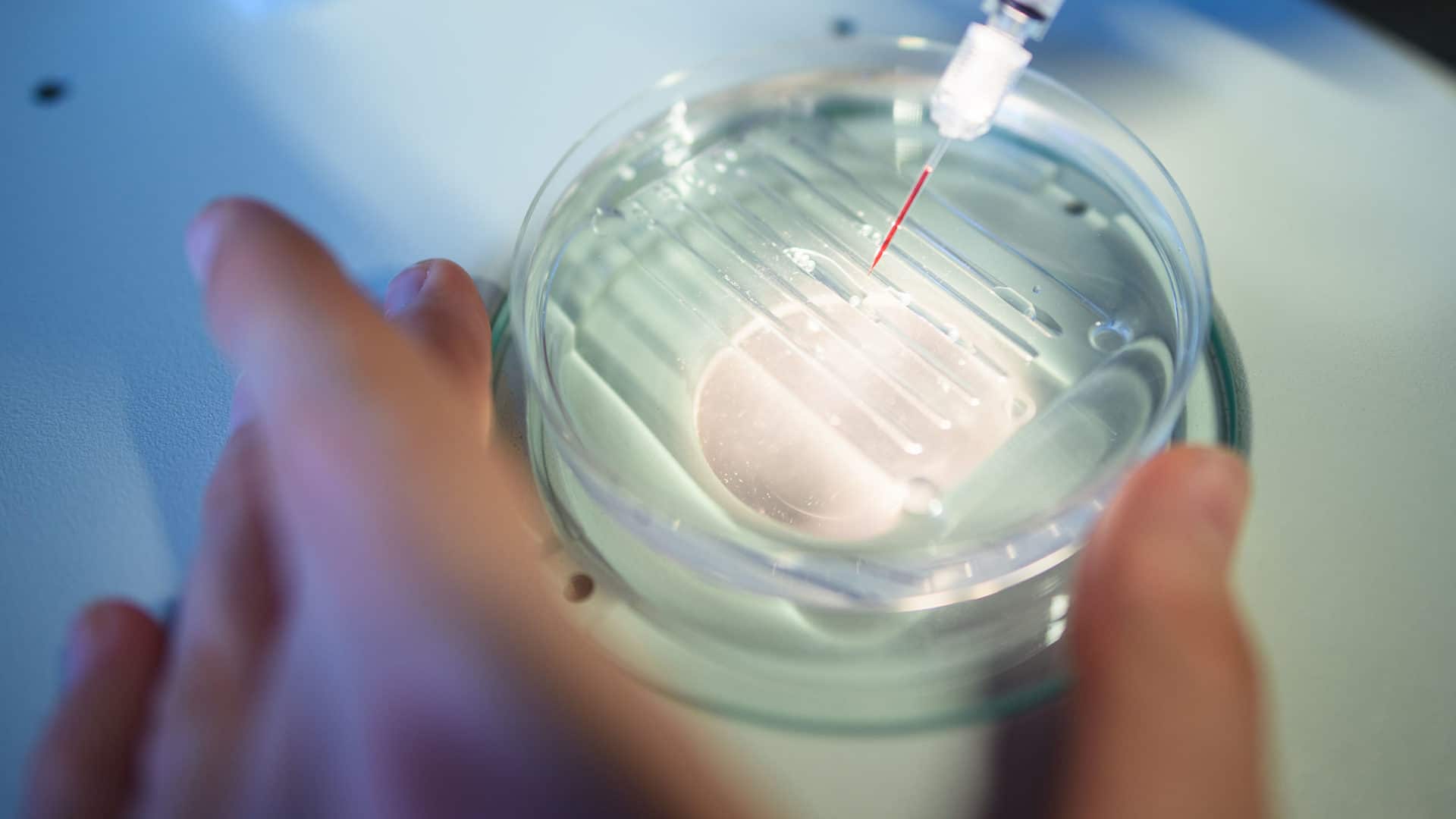Just seven years after scientists announced the first use of Crispr-Cas9 gene editing technology on human cells, researchers shared new evidence this week that Crispr can be used to cure two serious genetic disorders.
On Tuesday, NPR reported that a patient in Nashville had seen a dramatic decline in her symptoms of sickle cell disease after receiving a single gene therapy treatment in July. Sickle cell, which can lead to inflammation, debilitating pain, and life-threatening circulatory problems, affects millions of people around the world.
That same day, the biotech companies behind the sickle-cell treatment, Crispr Therapeutics and Vertex, also shared promising results from their first attempt to cure a case of beta thalassemia, another genetic disorder that affects blood proteins. Nine months after receiving the experimental treatment, a patient in Germany with beta thalassemia has almost no signs of the disorder.
While these results are still preliminary, they suggest a promising future for the medical applications of Crispr, an enzyme that allows scientists to target specific sequences of DNA, cut them out of the genome, and replace them with different genetic sequences.
While Crispr is not the first gene editing technique, it is more precise — and much cheaper — than its predecessors.
In the case of Victoria Gray, the patient with sickle cell disease, researchers drew bone marrow cells. They then used Crispr to edit a small section of the genetic material in those cells to begin producing functional hemoglobin blood proteins, instead of the defective hemoglobin that causes sickle cell.
In early July, Gray, who lives in Mississippi, received an infusion of the edited cells from doctors in Nashville. The doctors also destroyed many of her unedited bone marrow cells, hoping that the treated cells would permanently replace them. Gray has already seen a dramatic reduction in symptoms, and her body is beginning to produce healthy hemoglobin — signs that the treatment is working.
“It’s a miracle,” Gray told NPR.
Even as Crispr offers hope to some people, it raises serious ethical and political questions. Scientists and bioethicists were alarmed last year when a Chinese research team announced that it had used Crispr to edit the genes of two embryos, raising the specter of designer babies. People have suggested other applications for the technology, ranging from genetically engineered dogs and super-chickens to the de-extinction of lost species, that are likely to inspire opposition.
Crispr offers its users remarkable new powers to manipulate living tissue. The question is who gets to decide how to apply those powers responsibly — and whether it’s even possible to enforce those decisions in a fiercely competitive global scientific community that is regulated by dozens of governments, and shaped by billions of dollars of venture capital.
None of this, of course, downplays the joy that these therapies may bring. In her conversation with NPR, Gray, a mother of four, described the thrill of coming home to her kids after months in the hospital. “I did this,” she said, “for them.”
Also in the news:
• Researchers from Hong Kong universities expressed concern this week that the widespread anti-government, pro-democracy protests could have both immediate and long-term consequences for their institutions. At least seven universities have cancelled classes or prematurely ended their semesters, citing safety concerns, and encouraged students and faculty to stay home or pursue online coursework. Last week, three universities — Hong Kong Polytechnic University, City University of Hong Kong, and the Chinese University of Hong Kong (CUHK) — became sites of violent altercations between protesters and police involving tear gas, water cannons, and homemade explosives. Officials at CUHK and Polytechnic said that protesters had removed flammable chemicals from university labs, according to Nature. Michael Chan, a chemist studying proteins at CUHK, told Nature that he and his colleagues may need to restart time-sensitive experiments involving mouse models. Jianhua Zhang, the dean of science at Hong Kong Baptist University, said he worries the protests could have longer-term effects on academic pursuits in Hong Kong. Existing faculty might move away, Zhang told Nature, and “people will be reluctant to take offers to work with us.” (Nature)
• A study published in Nature Climate Change on Monday suggests that global wind speeds have substantially increased since 2010, following a period of consistent decline since the 1980s, perhaps as a result of changing patterns of ocean and atmospheric circulation. One beneficiary of this shift, the researchers say, is the wind energy industry. The paper projects that, if trends continue, by 2024 a single wind turbine will be able to generate 3.3 million kilowatt hours, an increase of 37 percent. These findings also clarify why the capacity factor of the U.S. wind fleet has steadily risen, at a rate of roughly 7 percent per decade. While analysts previously thought that technological innovations explained the growth, the study’s authors suggest that around half of the increase is likely due to the rise in global wind speeds. (BBC News)
• On Wednesday, a court in Tehran convicted six researchers with the Persian Wildlife Heritage Foundation (PWHF) of spying, handing down prison sentences that range from six to 10 years. Two more researchers await sentencing. Nine Asiatic cheetah conservationists, whose organization is based in Tehran, were first arrested in early 2018, after Iranian intelligence accused them of spying for foreign governments. Until last month, four faced a possible death sentence for charges of “sowing corruption on Earth.” Another, PWHF cofounder, Kavous Seyed-Emami, died in prison. (Iranian authorities say he died by suicide.) The charges against the researchers stem largely from their use of camera traps, which typically take photographs of animals that pass near the cameras’ motion sensors. The PWHF worked with Iran’s Department of Environment and had government permission to use the camera traps, and many analysts believe that the verdicts are political. PWHF had recently severed ties with billionaire investor Thomas Kaplan’s big cat conservation organization, Panthera, after Kaplan publicly denounced Iran at the summit United Against Nuclear Iran. Organizations around the world, and conservationists like Jane Goodall, have expressed their support of the jailed PWHF researchers. (National Geographic)
• Deforestation in the vast, fragile Amazon rainforest of Brazil has abruptly climbed to its highest level in more than a decade, according to new reports from the country’s National Institute for Space Research. The area of the forest destroyed by fire, logging, and agricultural land-clearing topped more than 3,700 square miles in the year between August 2018 and July 2019, according to institute data. Critics say that the increase in deforestation, up 30 percent from the previous year, is directly tied to the anti-environmental policies of Brazilian president Jair Bolsonaro, who was elected in the fall of 2018. Bolsonaro in turn has accused the institute of lying. Last summer, he fired the agency head after the official noted a sharp rise in forest loss. This week, Bolsonaro said he expected continued high levels of deforestation, calling it “cultural.” Environmentalists counter that the losses are approaching a critical level. Some 17 percent of the Amazon (60 percent of which lies in Brazil) has been cleared; at 25 percent loss, scientist say, moisture circulation by trees will drop below a sustainable level for a water-loving rainforest. (Vox)
• A scathing U.S. Senate report released this week described an alleged effort by China to “undermine the integrity of the American research enterprise” by coaxing U.S. scientists to funnel their knowledge to China in exchange for funding, lab space, and other benefits. The report directed most of its criticism at China’s Thousand Talents Plan (TTP), a recruitment program launched in 2008 to draw “high-quality overseas talents” to China. (After the program came under American scrutiny last year, Chinese authorities reportedly scrubbed mentions of it from websites and other materials.) Provisions in TTP contracts required U.S. researchers to “abide by Chinese law, keep the contract secret, recruit postdocs, and sign over any intellectual-property rights to the sponsoring Chinese institution,” reports Nature. The TTP also encouraged American researchers to set up shadow labs in China, so that the country could learn about ongoing U.S. research before it was made public. These efforts appear to have caught U.S. administrators off guard. “Many of the American institutions had no idea that their own faculty had a laboratory in China,” Michael Lauer, a deputy director at the National Institutes of Health, told Nature. (Nature)
• And finally: In a real life “Breaking Bad” scenario, two Arkansas chemistry professors were arrested last Friday for allegedly making methamphetamine in a school laboratory. The instructors, Terry Bateman and Bradley Rowland, were put on administrative leave from Henderson State University — a small liberal arts school about an hour’s drive from Little Rock — on October 11. A few days prior, the school received reports of an unidentified chemical smell that turned out to be benzyl chloride, a toxic chemical that can be used to synthesize meth. According to Clark County Sheriff Jason Watson, after the Arkansas State Crime Lab analyzed several samples from the lab under suspicion, there was probable cause to arrest the two men. Both are scheduled to appear in court on December 10. In another odd dispatch from America’s drug epidemic, South Dakota released an anti-meth campaign on Monday featuring the tongue-in-cheek motto “Meth. We’re on it.” While the message is meant to encourage residents of the state to work together to combat the problem, critics quickly took to Twitter to poke fun. Some also questioned the campaign’s price-tag, which has already topped $400,000. (Chemistry World, Sioux Falls Argus Leader)
“Also in the News” items compiled and written by Undark staff and interns.










